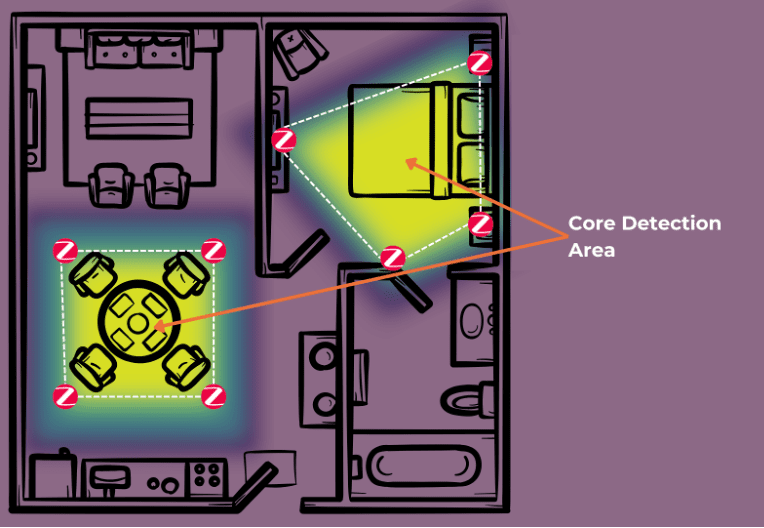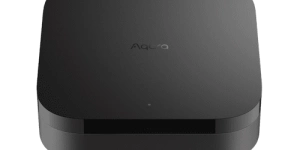Are Your Zigbee Bulbs About to Get a Magical Motion Sensing Upgrade?
Zigbee smart bulbs could soon gain presence sensing capabilities thanks to new firmware that analyzes wireless signals. This "Ambient Sensing" tech, developed by Ivani, uses existing bulbs to detect motion, offering a potential upgrade for millions of existing devices.

Please note: This page may contain affiliate links. Read our ethics policy
Is your house kitted out with Zigbee plugs and bulbs? Good news: they may soon be a getting a firmware upgrade that turns them into presence sensors. But how can a lightbulb possibly know if you’re in the room? Magic, basically. By which we mean, fluctuations in wireless network signals.
Wireless Network Sensing (WMS) isn’t a new concept, but this is the first time it’ll work with Zigbee, and potentially offer an overnight feature upgrade for millions of devices that already exist in our smart homes.

HueBlog first reported on smart lighting giant Philips wanting to turn all their bulbs into motion sensors at the end of 2023. Could this finally be getting close to reality? The video above was released by the Connectivity Standards Alliance in January 2025.
What is Ambient Sensing?
In the modern world, we’re constantly surrounded by wireless networks and signals that are invisible to the naked eye, but carry unbelievable amounts of data. But did you know that every object—including living ones like you or me—can affect that signal in subtle ways?
Developed by Ivani, Sensify detects those tiny modulations in wireless frequencies that occur when someone is stood or moves within them, and with the help of machine learning, can turn that into useful sensor data, such as “someone is here”. Ivani’s technology doesn’t need any kind of cloud data or connectivity; it runs completely locally in your home.
Ivani is partnered with a number of large household names to bring their ambient sensing tech into our homes, but can’t give details.
This Isn’t a Hardware Upgrade
The good news is that adding this magical presence-sensing ability to Zigbee won't require a hardware upgrade; just firmware.
There are some other requirements though. The device must be permanently powered—so things like door and window sensors won’t works, but plugs and bulbs will. On top of that, you’ll need at least three devices to establish a sensing zone, and that zone will be triangulated between them. For instance, if you have a Hue bulb in each corner of your room, that’ll cover the room. If you have just three, you’ll be able to sense in half the room. If you only have one or two bulbs, you won’t be able to use this feature.

(Image from Ivani)
But Zigbee Isn’t Matter, Why Should We Care?!
Matter adopted Thread mesh networking as its protocol of choice, but there’s two points to make here.
First, Zigbee was the precursor to Thread. The underlying hardware is similar, and the signals operate on the same frequency. The only difference is the protocol they use to talk to each other. So Thread may also see this Ambient Sensing capability added at some point.
Secondly, Matter can include Zigbee devices easily through the use of a Zigbee to Matter bridge, such as the Aqara Hub M3. With a bulb or other Zigbee device connected to the Aqara Hub, and the Hub connected to your Matter system, all the Zigbee devices connected to the Hub are automatically brought into the Matter. The Philips Hue bridge can operate in a similar way. If Hue bulbs get motion sensing, so will your Matter system.
Will It Actually Work?
This isn’t the first time presence sensing through wireless networks has been attempted in the smart home. Wiz (a sister company of Philips Hue) used WiFi-based WNS for their bulb's SpaceSense technology, but by all accounts, it’s just not reliable enough, with too many false positives. Linksys had a go with some mesh routers, but Linksys Aware was a subscription service and was discontinued in 2024. Ivani is the only company offering the technology over Zigbee, and due the typical number and spread of Zigbee devices in the home, might offer better reliability.
Will these additional features be available on subscription, for a one-time upgrade cost, or even for free? As the smart home market expands, it’s getting harder to justify the high price of Philips Hue smart bulbs—but as a free upgrade, this would be a compelling unique selling point that keeps them competitive. Signify (the company behind Philips Hue) isn’t confirming anything, and Ivani won’t reveal who their partners are. So for now, this is all firmly in the realms of “solid rumor”.

Aqara Hub M3
The Aqara Hub M3 is a Matter-compatible gateway that connects and manages up to 128 smart devices, facilitating local device automation without relying on Wi-Fi.